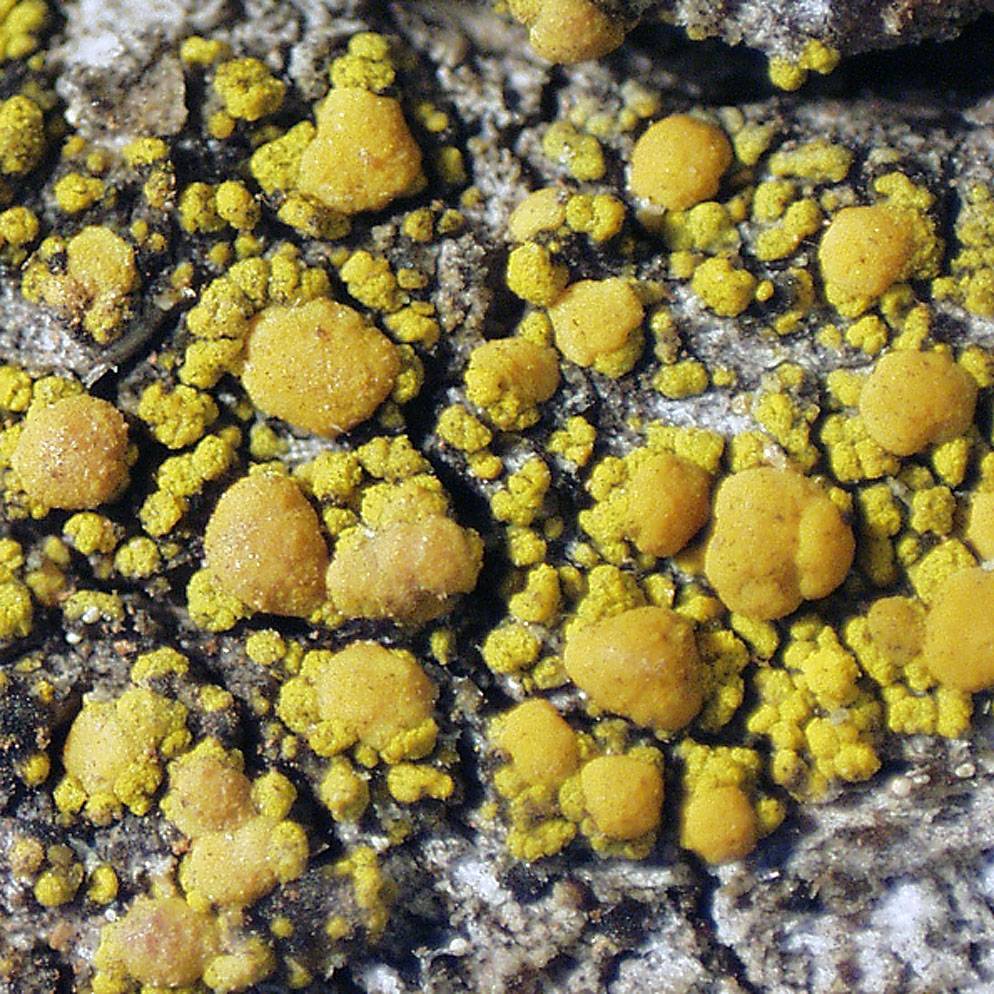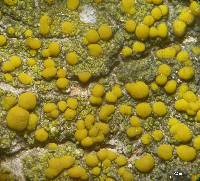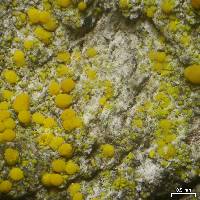
Consortium of Lichen Herbaria
- building a Global Consortium of Bryophytes and Lichens as keystones of cryptobiotic communities -
- Home
- Search
- Images
- Species Checklists
- US States: O-Z >
- US National Parks
- Central America
- South America
- US National Parks
- Southern Subpolar Region
|
|
|
|
Family: Candelariaceae
|
Nash, T.H., Ryan, B.D., Gries, C., Bungartz, F., (eds.) 2007. Lichen Flora of the Greater Sonoran Desert Region. Vol 3. Habit: lichenized Thallus: crustose, composed of discrete, scattered to crowded granules or areoles areoles: rounded to irregular, convex, 0.1-0.3(-0.4) mm wide surface: bright yellow to greenish yellow, coarse Apothecia: biatorine, sessile, 0.3-0.6 mm in diam. disc: darker yellow than the thallus, convex; margin: not lecanorine exciple: composed of branched and anatomosing hyphae radiating towards the margin and consisting of ±rectangular cells epihymenium: reddish yellow to yellow-brown hymenium: hyaline, (45-)50-60 µm tall; paraphyses: simple, 1.5-2.5 µm wide medially, with cylindrical to tapering tips up to 2.5 µm wide asci: clavate, 31-44 x 12-17 µm, 8-spored ascospores: hyaline, simple to rarely 1-septate, narrowly ellipsoid, (8.5-)11-13.5(-15) x (3.5-)4-5(-5.5) µm Pycnidia: sparse, appearing as orange-yellow dots on the thallus conidia: hyaline, narrowly ellipsoid, 2.5-4 x 1-1.5 µm, or hyaline, oblong, (5.5-)6-9(-10) x 3-4.5(-5) µm Spot tests: K+ pale red, KC-, C- Secondary metabolites: calycin, pulvinic acid lactone, and vulpinic and pulvinic acids. Substrate and ecology: on coniferous bark (Abies, Pinus, Pseudotsuga) and rarely wood (Juniperus) in fairly open forests up to 2700 m World distribution: western North America (California, Colorado, Idaho, Montana, and Oregon) Sonoran distribution: not currently known but may extend to the coastal mountains of southern California. Notes: Candelariella biatorina with its truly biatorine apothecia and yellow thallus is nearly unique within Candelariella. Only on wood is it likely to be confused with the granular C. deppeanae, which has lecanorine apothecia. Among all Candelariellae, C. biatorina appears unique in having two types of conidia. |
Powered by Symbiota






















